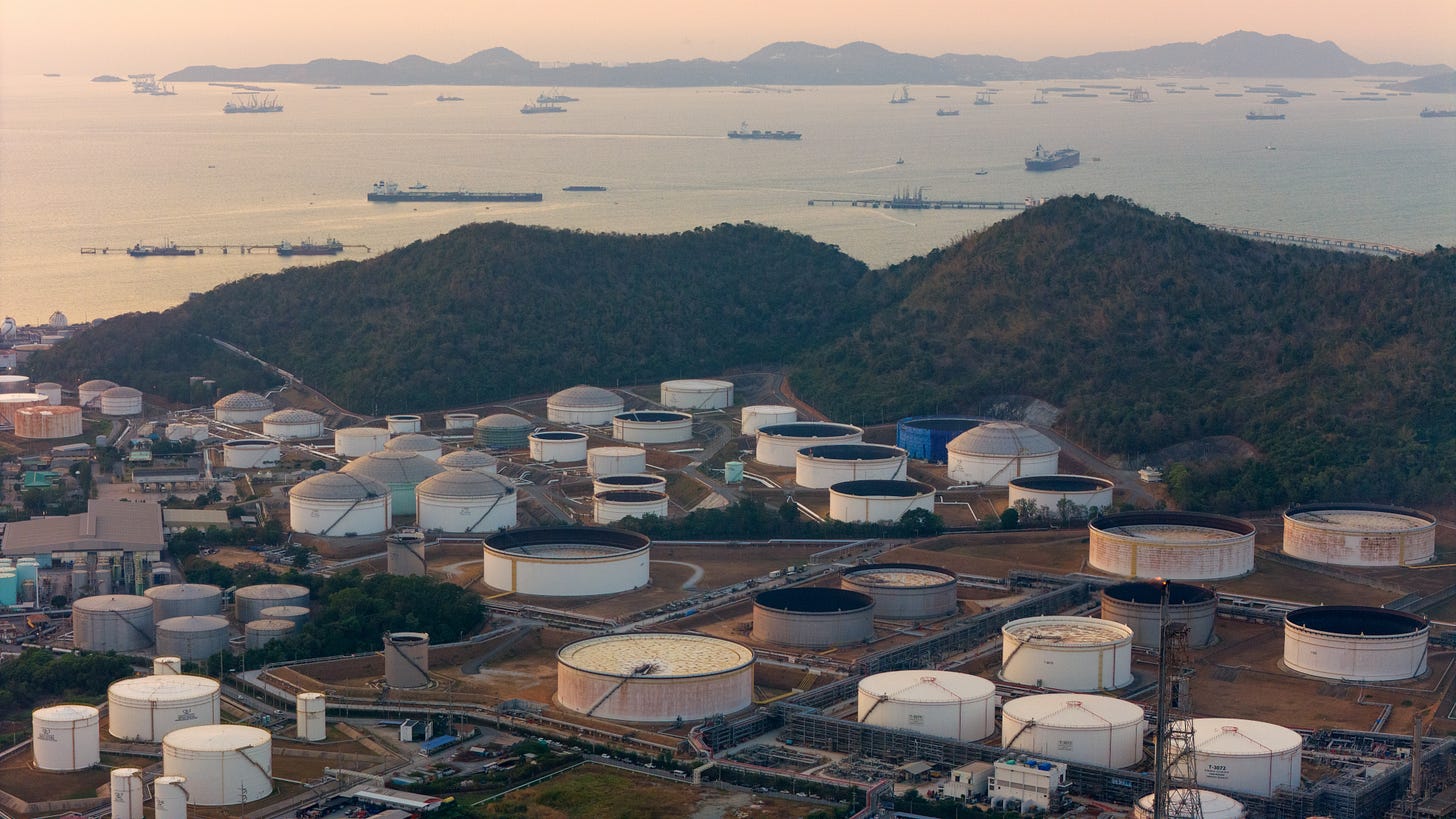A Truly Extraordinary ExxonMobil Report
Global oil and natural gas supplies virtually disappear without continued investment
Understand Physical Realities
Accept and Adapt
Live within Gaia
The ExxonMobil (XOM) company publishes an annual ‘Global Outlook’ report. The most recent report (August 2024) contains some extraordinary and disturbing forecasts that are summarized in the following chart.
The chart tells us the following.
The world’s demand for oil in the last decade has risen from about 86 to 95 in millions of barrels per day. In spite of all the talk about solar panels and EVs, we are using ever increasing amounts of oil. The new sources of energy are supplementing, not replacing the fossil fuels.
ExxonMobil assumes that long-term demand for oil through the year 2050 remains flat at about 100 million barrels per day. They do not explain this assumption, but it may be based on a belief that new sources of energy will actually start to replace the fossil fuels.
Oil supplies plummet starting around the year 2026 (that’s just a year and a half from now).
It is important to recognize that this report was published by ExxonMobil ― the world’s largest publicly traded oil company. It was not published by some fringe doomsayer or privileged tree-hugger. Moreover, even within the oil and gas industry, ExxonMobil has a reputation for conservatism.
Executive Summary
The report starts with the following statement.
The number of people in the world is expected to increase from 8 billion today to nearly 10 billion in 2050. With 2 billion more people on the planet, the world will need new ways to:
Produce more reliable, affordable energy
Drive global economic growth to raise living standards, particularly in the developing world
Further reduce greenhouse gas emissions
There’s a lot to unpack (and challenge) in those three bullet points, and we may do so in future posts. But let’s start by taking another look at the report’s projections.
Investment Requirements
Starting at the the year 2026, the chart shows three scenarios.
No Investment
Investment in existing fields
New resources and projects needed
1. No Investment
The first scenario ― ‘No Investment’ ― is both unlikely and unrealistic. About this scenario the report says,
The world would experience severe energy shortages and disruption to daily lives.
Oil prices could rise by 400% ― by comparison, prices rose 200% during the oil shocks of the 1970s.
Within 10 years, unemployment rates would likely reach 30%. That’s higher than during the Great Depression of the 1930s.
Any policy that would ‘keep it in the ground’ is not just.
I suggest that the above statements are misleading; were the supply of oil to drop to 30 million barrels per day just a few years from now, society as we know it would grind to a halt. For starters, virtually all of our commercial transport (trucks, trains, airplanes and ships) uses fossil fuels,
Yet this is the policy advocated by some Episcopalians (see Episcopal Fossil Fuel Resolution). ‘Be careful what you ask for ― you just might get it’.
2. Investment in Existing Fields
The second scenario ― ‘Investment in existing fields’ ― is what is happening now. Companies and governments throughout the world continue to invest in fossil fuel projects (hence the ever increasing concentration of greenhouse gases in the atmosphere).
But, even if these organizations invest as much as they can, the XOM chart projects that oil production plummets from 100 to 30 million barrels per day just a generation from now. Given that oil is utterly foundational to our modern way of living, that forecast is, to say the least, both startling and scary.
3. New Resources and Projects
In the report, we find the following statement,
Reducing emissions in “hard to decarbonize” sectors such as aviation, cement, steel, and others with unique energy needs will require the world to rely on the expansion of biofuels, carbon capture and storage and hydrogen, among other technologies.
The ‘big three’ industries that continue to rely on fossil fuels ― and that are crucial for everything we do ― are cement, urea (nitrate fertilizer) and steel. To say that these industries are ‘hard to decarbonize’ within just a few years is disingenuous.
The three newish technologies mentioned ― biofuels, carbon capture and hydrogen ― face fundamental thermodynamic limitations. They cannot fill the gap shown in the chart in the short amount of time available.
The Faith Community
One of the themes of this site is that the faith community needs to develop a theology that is appropriate for our times. Such a theology starts with facing up to physical, biological and project management realities. (Hence, the first and second theological points: ‘Understand Physical Realities’ and ‘Accept and Adapt’.)
If ExxonMobil ― the exemplar of energy conservatism ― can publish such a dramatic report, then surely the faith community needs to understand these energy realities.







Excellent insights. There is a theology and community that recognizes these realities, and more. https://www.newmessage.org/